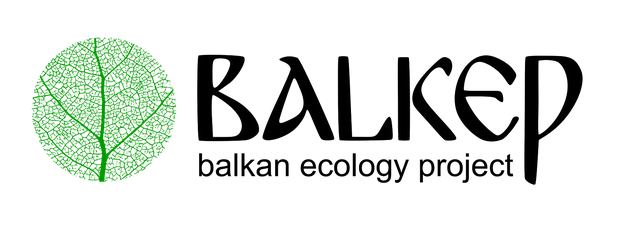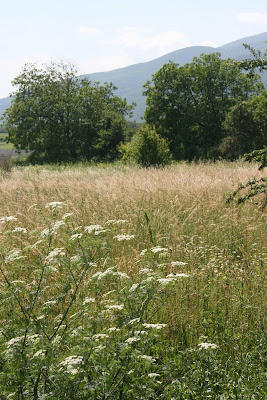So here's what we've been up to.
 |
| Plants, Seeds, eBooks, Consultancy, Bulk Fruit and Nut Tree Orders for Permaculture, Polyculture, Forest Gardens and Regenerative Landscapes. |
Aponia - Forest Garden Maintenance
We have a combination of fruiting shrubs and trees planted along swales in the Forest garden including Rubus fruticosus cv. - Blackberry, Ribes nigrum cv.- Blackcurrant, Aronia melanocarpa - Black Chokeberry and Prunus cerasifera - Cherry Plum and Chaenomeles speciosa - Jap. Quince. The plants generally grow well together but over time the dense entanglement can reduce air circulation within the mixed canopy that can start to create stressful conditions for the plants, it also makes it difficult to harvest. To remedy this we practice thinning and lifting. Thinning is basically removing approx 1/3rd of the oldest wood within each shrub. We also remove the dead wood and any branches that are rubbing against each other. Lifting is removing the lower branches of the trees to above head height in order to access around the tree and provide more light and air flow under the canopy. All of the pruned material are chopped into smaller pieces and applied to the surface under the shrubs. Here are Lilly and Lea (in the thick of it) thinning the shrubs and trees on the Swale. You can see the lifted Prunus cerasifera - Cherry Plum to the left of Lilly
Forest Garden Fruits
The first crop of Rubus idaeus cv. - Raspberry are ready. These fruits form on the unpruned canes from last year. The pruned canes will produce fruit around late September
It's another good year for Prunus spinosa - Sloe. The shrubs are full of fruit that will ripen in late summer.
Ribes rubrum cv. - Red currant are starting to ripen
The meadows around the area are ready for a hay cut. The lack of a long dry period this spring has prevented a cut so far this season.
Birdsfoot trefoil - Lotus corniculatus is one of many nitrogen fixing herbs that grow among the grasses in the meadows
Wildlife in the Gardens
I found what looks like the beginning of a wasp nest among the stack of straw bales in the garden.
We have a growing population of Grassnakes - Natrix natrix in the gardens. These are harmless snakes that can be useful pest predators feeding on slugs when they are young. This is the first time I have seen these snakes in the nursery area of garden. It was among the potted plants probably hunting for frogs that shelter among the pots looking for slugs. For more information about this snake check out Dylan's website Bulgarians Reptiles.
Biomass Trials - Ataraxia
An ideal biomass/mulch plant grows fast, is drought tolerant, competes minimally with crop plants, does not contain seed that easily spreads, is easy to handle and cut, i.e, not thorny/prickly or tough and fibrous, and can biodegrade relatively quickly (thereby returning the nutrients back to soil). It should also be inexpensive to produce lots of plants and easy to establish. We're experimenting with various plants in the trial garden to see which plants are most suitable for mulch production. You can find out more about our biomass trials here.
The following are photos showing patches of Paulownia tomentosa - Foxglove Tree , Morus alba - White Mulberry and Miscanthus x giganteus - Giant Miscanthus.
Out of these three plants Miscanthus x giganteus - Giant Miscanthus is certainly the easiest to propagate with a plant grown from a rhizome being able to produce up to 5 more plants within a year. Some care should be taken when choosing the location of the Miscanthus x giganteus - Giant Miscanthus as the plant spreads rapidly forming large impenetrable clumps. We plant on raised beds and mow the pathways aorund the beds to keep them contained. Here is Ronan dividing clumps of Miscanthus x giganteus for planting around the pond in Katalêpsis -The Polyculture Study Guest House. These plants are also useful in producing support material for vegetables in the gardens.
For more on growing your own mulch see our previous blog post - How to grow your own mulch
For the Bulgarian translation of the blog see here - thank you Mihaela Tzarchinska.
Regenerative Landscape Design - Online Interactive Course
Want to learn how to design, build and manage regenerative landscapes? Join us for our Regenerative Landscape Design - Online Interactive Course from May 1st to Sep 13th, 2023.
We're super excited about running the course and look forward to providing you with the confidence, inspiration, and opportunity to design, build and manage regenerative landscapes, gardens, and farms that produce food and other resources for humans while enhancing biodiversity.
Regenerative Landscape Design Online Course
You can find out all about the course here and right now we have a 20% discount on the full enrollment fees. Just use the promo code RLD2023 in the section of the registration form to receive your discount.
We are looking forward to providing you with this unique online learning experience - as far as we know, the very first of its kind. If you are thinking of reasons why you should do this course and whether this course is suitable for you, take a look here where we lay it all out. Looking forward to it!
--------------------------------------------------------------------------------------------------------------------------
Support Our Project
If you appreciate the work we are doing you can show your support in several ways.
- Make a purchase of plants or seeds from our Bionursery or Online Store
- Consider joining us for one of our Courses or Online Courses
- Comment, like, and share our content on social media.
- Donate directly via PayPal to balkanecologyproject@gmail.com or via FTX Pay
If you appreciate the work we are doing you can show your support in several ways.
- Make a purchase of plants or seeds from our Bionursery or Online Store
- Consider joining us for one of our Courses or Online Courses
- Comment, like, and share our content on social media.
- Donate directly via PayPal to balkanecologyproject@gmail.com or via FTX Pay
 |
| You can also register for our online training, services, and products directly here. |














































